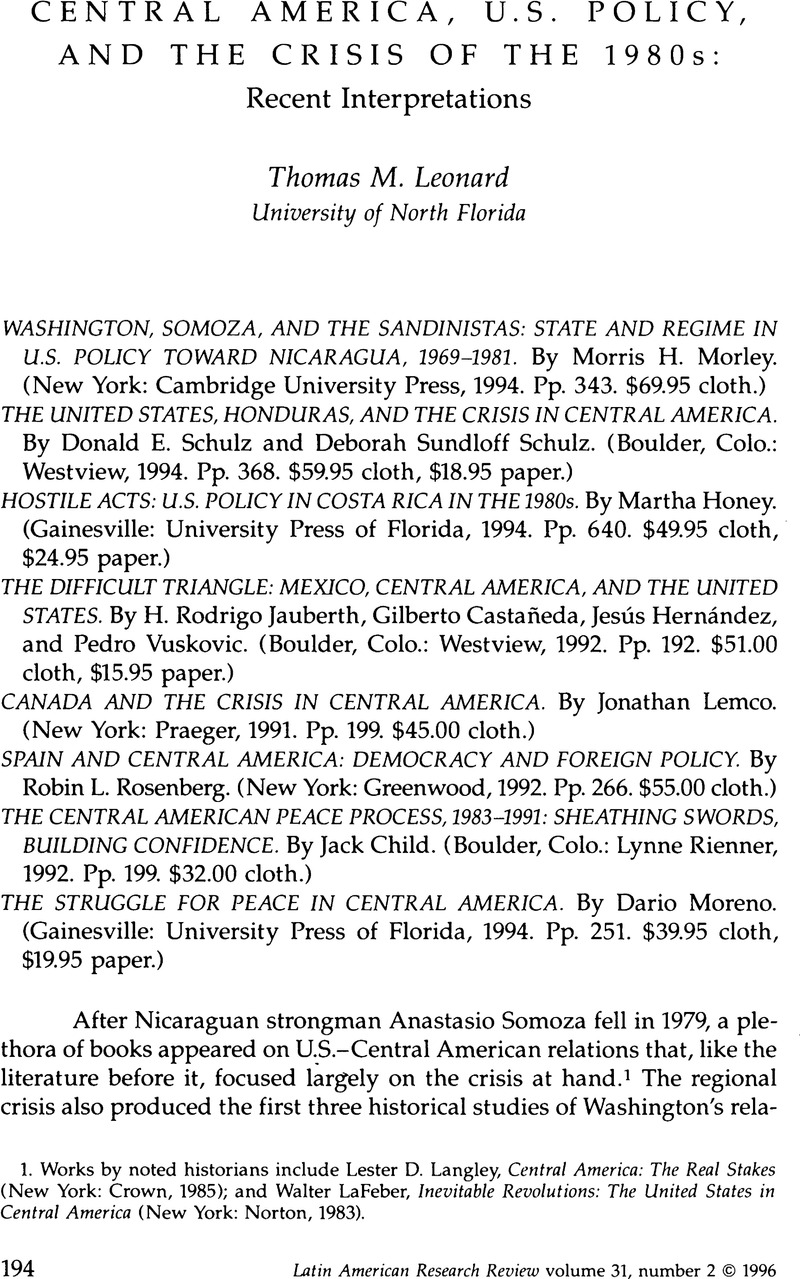No CrossRef data available.
Article contents
Central America, U.S. Policy, and The Crisis of the 1980s: Recent Interpretations
Review products
Published online by Cambridge University Press: 05 October 2022
Abstract

- Type
- Review Essays
- Information
- Copyright
- Copyright © 1996 by the University of Texas Press
References
1. Works by noted historians include Lester D. Langley, Central America: The Real Stakes (New York: Crown, 1985); and Walter LaFeber, Inevitable Revolutions: The United States in Central America (New York: Norton, 1983).
2. John E. Findling, Close Neighbors, Distant Friends: United States-Central American Relations (Westport, Conn.: Greenwood, 1987); Thomas M. Leonard, Central America and the United States: The Search For Stability (Athens: University of Georgia Press, 1991); and John H. Coatsworth, Central America and the United States: The Clients and the Colossus (New York: Twayne, 1994).
3. Robert A. Pastor, Condemned to Repetition: The United States and Nicaragua (Princeton, N.J.: Princeton University Press, 1987); and Anthony Lake, Somoza Falling: The Nicaraguan Dilemma, a Portrait of Washington at Work (Boston, Mass.: Houghton Mifflin Company, 1989).
4. Among several contemporary accounts of Reagan's Central American policy are Timothy Ashby, The Bear in the Backyard: Moscow's Caribbean Strategy (Lexington, Mass.: Lexington, 1987); and Roy Gutman, Banana Diplomacy: The Making of American Policy in Nicaragua, 1981–1987 (New York: Simon and Schuster, 1988).
5. Traditionally, scholars have included Costa Rica, El Salvador, Guatemala, Honduras, and Nicaragua in their definition of Central America. Although Belize and Panama are also located on the isthmus, Belize has generally been bracketed with the former British colonies, while Panama has been treated separately because of its unique relationship with the United States revolving around the canal.
6. The war derived its name from the fact that the conflict between El Salvador and Honduras in 1969 began with violence among the spectators at a soccer match in Tegucigalpa between teams representing the two countries. The origins of the war can be traced to migration by Salvadoran peasants into Honduras over two generations and their laying claim to land that Honduran peasants viewed as their own. See Thomas P. Anderson, The War of the Dispossessed: Honduras and El Salvador, 1969 (Lincoln: University of Nebraska Press, 1981).




